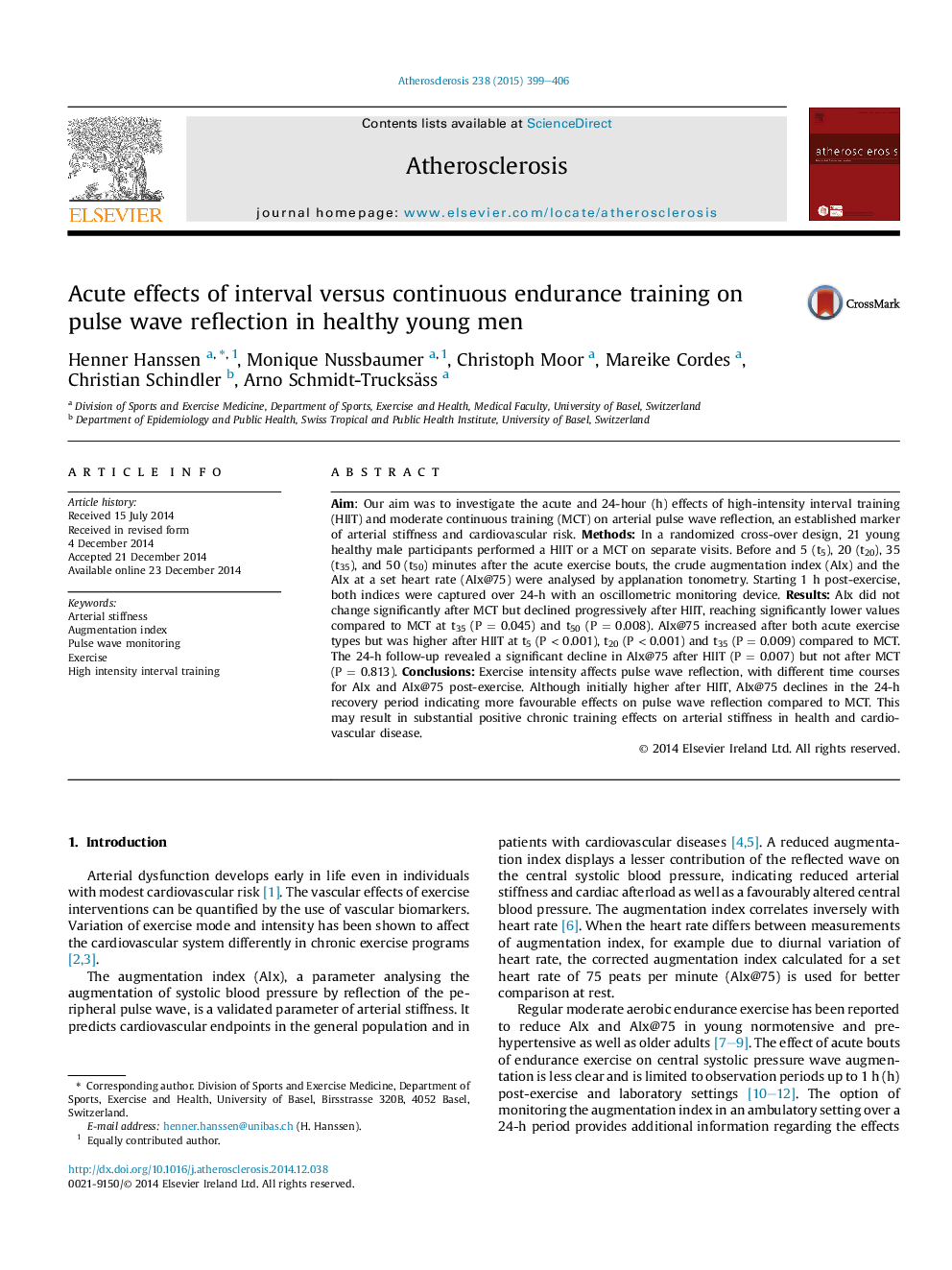| Article ID | Journal | Published Year | Pages | File Type |
|---|---|---|---|---|
| 5945504 | Atherosclerosis | 2015 | 8 Pages |
â¢Acute and 24-h effects of different exercise bouts on pulse wave reflection.â¢Decrease of AIx in the immediate recovery phase after HIIT.â¢Increase of AIx@75 in the immediate recovery phase after HIIT.â¢Reduction of AIx@75 during 24-h follow-up after HIIT but not MCT.â¢HIIT seems an effective means to reduce arterial stiffness.
Aim: Our aim was to investigate the acute and 24-hour (h) effects of high-intensity interval training (HIIT) and moderate continuous training (MCT) on arterial pulse wave reflection, an established marker of arterial stiffness and cardiovascular risk. Methods: In a randomized cross-over design, 21 young healthy male participants performed a HIIT or a MCT on separate visits. Before and 5 (t5), 20 (t20), 35 (t35), and 50 (t50) minutes after the acute exercise bouts, the crude augmentation index (AIx) and the AIx at a set heart rate (AIx@75) were analysed by applanation tonometry. Starting 1Â h post-exercise, both indices were captured over 24-h with an oscillometric monitoring device. Results: AIx did not change significantly after MCT but declined progressively after HIIT, reaching significantly lower values compared to MCT at t35 (PÂ =Â 0.045) and t50 (PÂ =Â 0.008). AIx@75 increased after both acute exercise types but was higher after HIIT at t5 (PÂ <Â 0.001), t20 (PÂ <Â 0.001) and t35 (PÂ =Â 0.009) compared to MCT. The 24-h follow-up revealed a significant decline in AIx@75 after HIIT (PÂ =Â 0.007) but not after MCT (PÂ =Â 0.813). Conclusions: Exercise intensity affects pulse wave reflection, with different time courses for AIx and AIx@75 post-exercise. Although initially higher after HIIT, AIx@75 declines in the 24-h recovery period indicating more favourable effects on pulse wave reflection compared to MCT. This may result in substantial positive chronic training effects on arterial stiffness in health and cardiovascular disease.
